4.1: Important Individuals in the History of Government and Politics
- Page ID
- 2029
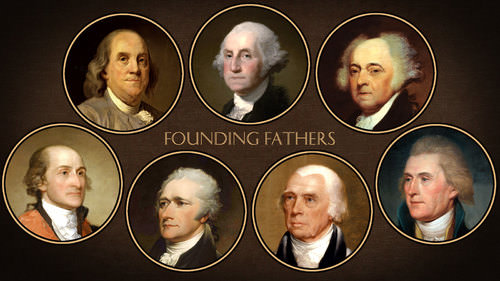
Many individuals and teams provided enlightening ideas and fulfilled significant roles to shape the foundation of America. This section will detail the accomplishments of some of the most important men in the history of government and politics: George Washington, Thomas Jefferson, John Marshall, Andrew Jackson, Abraham Lincoln, Theodore Roosevelt, Franklin D. Roosevelt, and Ronald Reagan all played a pivotal part in the progress of American ideals.
The Founding Fathers
The term Founding Fathers refers broadly to those individuals who led the American Revolution against the authority of the British Crown and established the United States of America. It is also more narrowly defined as referring specifically to those who either signed the Declaration of Independence in 1776 or who were delegates to the 1787 Constitutional Convention and took part in drafting the proposed Constitution of the United States.
The men who attended the Constitutional Convention included some of the most prominent men of the revolutionary and post-revolutionary era. George Washington was present at the convention (and was chosen to be its president), along with Benjamin Franklin, Alexander Hamilton, James Madison, and Roger Sherman. As a group, the framers of the Constitution were wealthier and better educated than the average American. Nearly all of them had experience in state and national governments, and many of them had fought in the revolution. They were truly the “cream of the crop” of leaders and thinkers in America during the pre- and post-colonial periods.
| FOUNDING FATHER | ESSENTIAL FACTS |
| John Adams |
John Adams was born in Massachusetts in 1735. He was a Harvard lawyer who defended the British soldiers after the Boston Massacre. He served as a delegate to both Continental Congresses and was on the committee to write the Declaration of Independence. He was the first Vice President and the second President of the United States. |
| Benjamin Franklin |
Benjamin Franklin was an inventor, writer, printer, diplomat, scientist, humorist, and statesman. He was born in Boston in 1706. In 1733 he started publishing Poor Richard’s Alamanack. What distinguished Franklin’s almanac were his witty sayings and lively writing. During the French and Indian War, Franklin advocated colonial unity with his Albany Plan which encouraged the colonists to “Join or Die.” He was a delegate to the both Continental Congresses and a member of the committee to write the Declaration of Independence. Franklin was the U.S. Ambassador to France and helped to negotiate the Treaty of Paris that ended the American Revolution. The French loved Franklin, and he was very popular in that country. Later, he was the oldest delegate to the Constitutional Convention at the age of 81. He became a member of the Pennsylvania Abolition Society before he died. |
| Alexander Hamilton |
Alexander Hamilton was born in the West Indies in 1755. He was the Aide-De-Camp (personal assistant) to George Washington during the American Revolution. He was a delegate to the Constitutional Convention in 1787 from New York. As a proponent of a strong central government, he was one of the authors of The Federalist Papers (essays that promoted the ratification of the Constitution). Hamilton was the first Secretary of the Treasury under President George Washington, where he worked to pay off the country’s war debts through his financial plan, which included the assumption of state debts and creation of a national bank. He was the founder of the Federalist Party, which is considered the first political party. On July 11, 1804 he fought a duel with Aaron Burr who was angry over Hamilton’s support of Jefferson in the presidential election of 1800. Hamilton was shot by Burr and died the next day |
| John Jay |
John Jay was born December 12th, 1745, Representing the point of view of the American merchants in protesting British restrictions on the commercial activities of the colonies, he was elected to the Continental Congress in 1774 and again in 1775. Jay did not favor independence from Britain. However, once the revolution was undertaken Jay was an ardent supporter of the new nation. He drafted the first constitution of New York State and was appointed chief justice of the state in 1777. In the following year, he was again elected to the Continental Congress and was chosen as its president. The ineffectiveness of the Articles of Confederation led Jay to become a proponent of a strong national government and one of the primary authors of the Federalist Papers. After the Constitution was ratified, George Washington nominated John Jay as the chief justice, and he was confirmed two days later. Jay was instrumental in establishing the Supreme Court as a reasoned and honorable institution. He later retired from service in the Supreme Court and was elected (without even running) to be Governor of New York in 1795 where he proved to be a popular and productive governor. |
| Thomas Jefferson |
Thomas Jefferson was born in Virginia in 1743. As a Virginia planter, he was also a delegate to the House of Burgesses and to the First and Second Continental Congress. He was selected to draft the Declaration of Independence and is considered the author of the Declaration of Independence. Next, he was a U.S. Minister to France. Jefferson was the first Secretary of State under George Washington and Vice-President under John Adams. Leader of the Democratic-Republican Party, in 1801 he became the third President of the United States. As President, he was responsible for the Louisiana Purchase in 1803 and the Embargo Act of 1807. Jefferson sent the Lewis and Clark Expedition in 1804 to explore the new territory purchased from France, which produced a wealth of scientific and geographical knowledge. He died on July 4, 1826, the fiftieth anniversary of the Declaration of Independence. His self-written epitaph read: “Here was buried Thomas Jefferson Author of the Declaration of American Independence of the Statute of Virginia for religious freedom & Father of the University of Virginia.” |
| James Madison |
James Madison was born in Virginia in 1751. Madison was a delegate to the Philadelphia Constitutional Convention and is widely considered the “Father of the Constitution” for his many contributions to the basic structure of our government. He used Montesquieu’s idea for separation of powers but also added a system of checks and balances to assure no one branch was too powerful. He authored the Virginia Plan which proposed representation in the legislative branch based on population but was willing to compromise by creating a bicameral legislature. He supported ratification of the new U.S. Constitution and wrote over a third of the Federalist Papers, promoting its ratification. He helped frame the Bill of Rights, and then became Secretary of State under Thomas Jefferson. He was the fourth President of the United States. During his presidency, the United States fought Great Britain in the War of 1812. |
| George Washington | George Washington was born in Virginia in 1732. He was a Virginia planter and a delegate to the House of Burgesses. Washington fought during the French and Indian War and was a delegate to the Continental Congress. He was chosen Commander of the Continental Army during the American Revolution. Later, he became the President of the Philadelphia Constitutional Convention in 1787 and the First President of the United States. During his presidency, his foreign policy was to remain neutral, and he warned the country against European entanglement and political parties in his Farewell Address. George Washington is referred to as the “Father of our Country.” |
Although the delegates to the Constitutional Convention met in secret, the records of the convention debates reveal lively conversations about what form of government to create. The convention debates and the subsequent debates over ratification of the new constitution were generally organized as a debate between the Federalists and the Anti-federalists. The Federalists supported ratification because they believed that the country needed a stronger national government. Their arguments for ratification were made in a series of famous essays written by James Madison, Alexander Hamilton, and John Jay called The Federalist Papers. The Anti-federalists opposed ratification of the Constitution because they believed that it gave the national government too much power. They preferred a political union where the states had more power. The Anti-federalists tend to be overlooked because they lost the argument. The Constitution was ratified. But the Anti-federalist Papers are worth reading in an era when American politics includes criticism of the size of the federal government.
The legacy of the Founding Fathers continues to this day as the document that they drafted during the Constitutional Convention has held true and steadfast throughout the test of time.
John Marshall
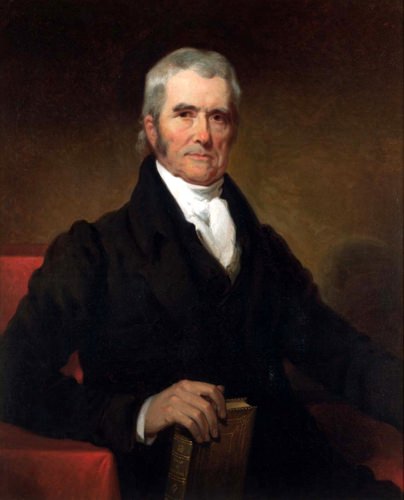
John Marshall was a self-made man who lacked formal schooling due to the isolated area in Virginia where he was raised. Because schools were few, his father taught him at home. Upon the outbreak of the Revolutionary War, Marshall volunteered and served in the 11th regiment of Virginia. He participated in the battles at Germantown, Brandywine, Monmouth, and Stony Point. During the war, Marshall developed an interest in law. When the war concluded, he studied law at the College of William and Mary. However, he only studied law for about six weeks. After passing the bar in 1780, he became a successful attorney and congressman for Virginia.
George Washington, a man much admired by Marshall, offered him the post of Attorney General and U.S. minister to France. He did not accept Washington’s offer. He did, however, reluctantly accept Adam’s appointment as one of three commissioners to France. When Marshall and the other commissioners arrived in France, they were quickly asked for a bribe in order to provide a stronger U.S./French relationship. The commissioners vehemently refused, returned to America, and received national recognition for the incident known as the XYZ Affair.
In 1799, Marshall ran for and received a seat in the U.S. House of Representatives. In 1800, due to his staunch support of Adams and his stellar service, Adams first appointed Marshall to the position of secretary of state. Marshall reluctantly accepted the position. Then, in 1801, President Adams appointed Marshall as chief justice of the United States.
During Marshall’s 34 years as chief justice, he clarified the position of the Supreme Court and made it a central fixture in the process of government. As a fervent Constitutionalist, John Marshall worked tirelessly to foster the Supreme Courts role in guiding national policy and public opinion.
One of the most important cases heard by the court during Marshall’s tenure was Marbury v. Madison.
Marbury v. Madison (1803)
Facts of the Case
The case began on March 2, 1801, when an obscure Federalist, William Marbury, was designated as a Justice of the Peace in the District of Columbia. Marbury and several others were appointed to government posts created by Congress in the last days of John Adams's presidency, but these last-minute appointments were never fully finalized. The disgruntled appointees invoked an act of Congress and sued for their jobs in the Supreme Court. (Justices William Cushing and Alfred Moore did not participate.)
Question
Is Marbury entitled to his appointment? Is his lawsuit the correct way to get it? Is the Supreme Court the place for Marbury to get the relief he requests?
Conclusion
Decision: 4 votes for Madison, 0 vote(s) against
Legal provision: Section 13 of the Judiciary Act of 1789
The justices held, through Marshall's forceful argument, that on the last issue the Constitution was "the fundamental and paramount law of the nation" and that "an act of the legislature repugnant to the constitution is void." In other words, when the Constitution--the nation's highest law--conflicts with an act of the legislature, that act becomes invalid.
Importance: This case establishes the Supreme Court's power of judicial review allowing courts to overturn laws on the basis of unconstitutionality. With this case, the Supreme Court gave itself a series of check and balance powers that raised its prominence to that of the Legislative and Executive branches.

Andrew Jackson
Andrew Jackson was the seventh president of The United States. He served two terms in office, from 1829-1837. During his presidency, Jackson challenged the status quo of typical political procedures and typical political participants.
Andrew Jackson, an orphan from South Carolina, was the definition of a self-made man. He was just a boy when he fought in the Revolutionary War. Then, he studied law and became a prosecutor, judge, senator, and congressman from Tennessee. His main claim to fame arose from his role as Major General in the War of 1812, the battle with the Creek Indians, and the victory over the British at the Battle of New Orleans, (which was fought after the war had been declared over).
When the orders to disband his troops were received, Jackson defied them. He bravely used his own resources (money and horses) to successfully lead his troops back to Tennessee. His toughness was equated to the hickory tree, and after his heroism toward his troops, Jackson was given the nickname “Old Hickory.”
In 1829, Jackson used his military fame to receive the Democratic nomination and ran against incumbent John Quincy Adams. Jackson organized and ran a national political campaign in which he called himself, “a man of the people.”
Using this platform to promote an anti-elitism stance, he fought the small number of eastern elites that normally participated in politics. Jackson won huge victories in the south and the west. According to Kahn Academy.org, “The election marked a transition from the small, elite political parties of the past to the mass political parties that the United States continues to host today.”
President Jackson challenged the Bank of the United States on the grounds that it promoted eastern elitism in favoritism against the common man. Although the Supreme Court declared the bank constitutional, Jackson was determined to close it. During his impassioned fight against the bank, Jackson passed legislation aimed at weakening the national bank. Jackson moved government money to state-chartered banks, which sent the economy into a temporary depression. The Bank War ended in 1836 when the charter for the national bank was not renewed. Jackson had won.
An additional legacy from Jackson’s presidency was the establishment of The Indian Removal Act of 1830, which led to the Trail of Tears. The Trail of Tears was a series of removals of Native Americans in the United States from their ancestral homelands in the Southeastern United States to areas in the west that had been designated as Indian Territory. The relocated tribe members suffered from exposure, disease, and starvation while traveling to the reserved land. Many died before reaching their destinations.
Although portrayed as a positive movement to open the territory west of the Mississippi to westward expansion by Anglo settlers, the Indian Removal Act resulted in the brutal death of many natives who refused to go peacefully. The Trail of Tears occurred when federal troops forcibly removed the Cherokee from Georgia after the Cherokee unsuccessfully attempted to use legal action to block removal. As the majority of Cherokee did not vacate their land by the designated time, they were rounded up and marched to Oklahoma at gunpoint. Approximately 4000 Native Americans lost their lives on this journey.
Jackson had many notions that the average American favored, and his concept of politics for all encouraged many changes to the political system. In his final speech to the American public, he said, “But you must remember, my fellow-citizens, eternal vigilance by the people is the price of liberty, and that you must pay the price if you wish to secure the blessing.”
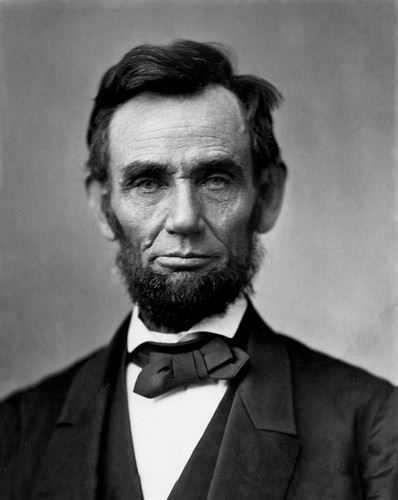
Abraham Lincoln
Abraham Lincoln was born in the Kentucky wilderness where his family worked the land as farmers. After becoming involved in a land dispute, the Lincoln family moved to Indiana. He did not have any formal schooling but reportedly was encouraged to read by his step-mother. Rumors from his Indiana neighbors claim he would walk for miles to borrow a book.
When the family moved once again, Lincoln followed them to Illinois, but after another move, he chose to go his own way and settled in New Salem. While in New Salem, Lincoln held many jobs including shopkeeper, postmaster, and store owner.
Eventually, Lincoln became a captain in the volunteer army in the battle of the Black Hawks. He did not see any combat, but he did make some political connections. Lincoln launched his political career in 1834 as a legislator for the Whig party. He then decided to become a lawyer, so he taught himself by reading Blackstone’s book about law.
In 1847 Lincoln became a representative where he was vocally against the Mexican-American war while he also vocally supported Zachary Taylor for president.
Soon, Lincoln decided to run again for the Senate. He embarked on a campaign, which included a series of debates against the incumbent senator, Stephen Douglas. Douglas maintained his seat, but the attention earned Lincoln national attention as momentum gathered to give him a chance at the presidency.
In 1860, he was elected the 16th president of the United States. During his tenure in office, Lincoln led the country through the Civil War. He delivered the Emancipation Proclamation in 1863 that freed the slaves. He also delivered the Gettysburg Address where he reminded the country that the Declaration of Independence maintained equality for all.
Lincoln led the country in Reconstruction, but he believed in a quick resolution to allow the southern states to return to the Union. He was assassinated before he could follow through with this plan.
His strong leadership, simple humor, speaking style, and political accomplishments have left a permanent legacy in American history.
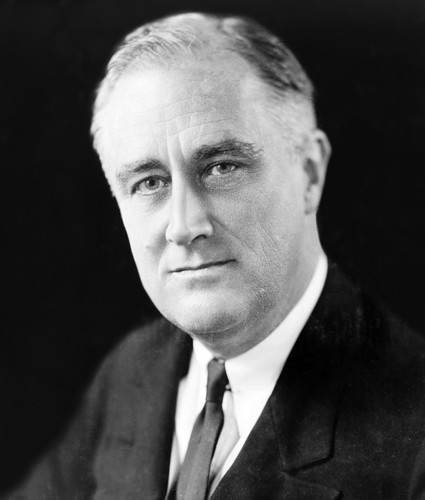
Franklin Delano Roosevelt
Franklin Delano Roosevelt (FDR), the 32nd American president, served four terms in office--that is 16 years! Eventually after his presidency, the 22ndamendment, which limited the presidential term limit to two terms, was ratified in 1951. Prior to this amendment, there was not a rule or regulation about seeking reelection. The previous presidents all simply followed Washington’s and Adams’s precedent of only running for two terms.
Roosevelt’s popularity stemmed from his leadership through the Great Depression and World War II. He successfully steered the nation while expanding the federal government’s powers. The social programs created through the New Deal produced a large presence of government in an average citizen’s life. This relationship between government and citizen was forever changed.
The New Deal was implemented in order to restore hope to an out-of-work and down-on-its-luck American public. The governmental agencies such as Civilian Conservation Corps, Tennessee Valley Authority, and the Works Progress Administration, and many more created under the New Deal, restored hope and prosperity to the public. Some of these agencies are still in existence today.
Elected in 1932, Democratic president Franklin Delano Roosevelt (FDR) sought to implement a “New Deal” for Americans amid staggering unemployment. He argued that the national government could restore the economy more effectively than states or localities. He persuaded Congress to enact sweeping legislation. New Deal programs included boards that enforced wage and price guarantees, created programs to construct buildings and bridges, developed national parks, created artworks, and provided payments to farmers to reduce acreage of crops and stabilize prices.
The 1930s New Deal programs included commissioning photographers to document social conditions during the Great Depression. The resultant photographs are both invaluable historical documents and lasting works of art.
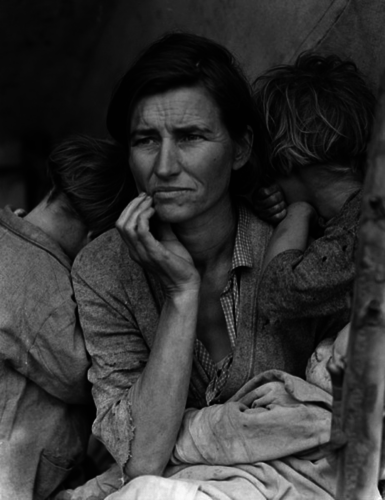
The New Deal and the End of Dual Federalism
By 1939, national government expenditures equaled state and local expenditures combined. FDR explained his programs to nationwide audiences by having “fireside chats” on the relatively young medium of radio.
His policies were highly popular, and he was reelected by a landslide in 1936. The Supreme Court, after rejecting several New Deal measures, eventually upheld national authority over such once-forbidden terrain as labor-management relations, minimum wages, and subsidies to farmers. The Court thereby sealed the fate of Dual Federalism.
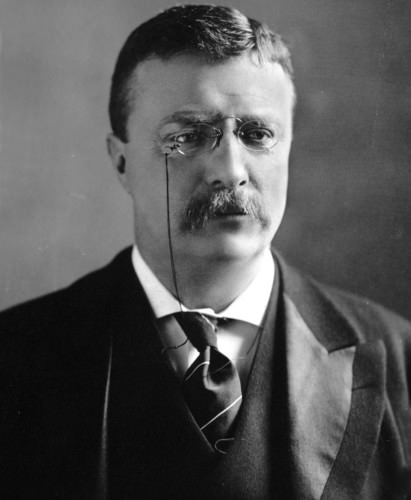
Theodore Roosevelt
With the assassination of President McKinley in 1901, Theodore Roosevelt, almost 43, became the youngest President in the nation’s history. He brought new excitement and power to the presidency, as he vigorously led Congress and the American public toward progressive reforms and a strong foreign policy.
He took the view that the President as a “steward of the people” should take whatever action necessary for the public good unless expressly forbidden by law or the Constitution.” I did not usurp power,” he wrote, “but I did greatly broaden the use of executive power.”
Roosevelt’s youth differed sharply from that of the log cabin Presidents. He was born in New York City in 1858 into a wealthy family, but he too struggled against ill health, and in his triumph became an advocate of the strenuous life.
During the Spanish-American War, Roosevelt was lieutenant colonel of the Rough Rider Regiment, which he led on a charge at the battle of San Juan. He was one of the most conspicuous heroes of the war.
Boss Tom Platt, needing a hero to draw attention away from scandals in New York State, accepted Roosevelt as the Republican candidate for Governor in 1898. Roosevelt won and served with distinction.
As President, Roosevelt held the ideal that the Government should be the great arbiter of the conflicting economic forces in the Nation, especially between capital and labor, guaranteeing justice to each and dispensing favors to none.
Roosevelt emerged spectacularly as a “trust buster” by forcing the dissolution of a great railroad combination in the Northwest. Other antitrust suits under the Sherman Act followed.
Roosevelt steered the United States more actively into world politics. He liked to quote a favorite proverb, “Speak softly and carry a big stick. . . . ”
Aware of the strategic need for a shortcut between the Atlantic and Pacific, Roosevelt ensured the construction of the Panama Canal. His corollary to the Monroe Doctrine prevented the establishment of foreign bases in the Caribbean and arrogated the sole right of intervention in Latin America to the United States.
He won the Nobel Peace Prize for mediating the Russo-Japanese War, reached a Gentleman’s Agreement on immigration with Japan, and sent the Great White Fleet on a goodwill tour of the world.
Some of Theodore Roosevelt’s most effective achievements were in conservation. He added enormously to the national forests in the West, reserved lands for public use, and fostered great irrigation projects.
He crusaded endlessly on matters big and small, exciting audiences with his high-pitched voice, jutting jaw, and pounding fist. “The life of strenuous endeavor” was a must for those around him, as he romped with his five younger children and led ambassadors on hikes through Rock Creek Park in Washington, D.C.
Leaving the Presidency in 1909, Roosevelt went on an African safari, then jumped back into politics. In 1912 he ran for President on a Progressive ticket. To reporters he once remarked that he felt as fit as a bull moose, the name of his new party.
While campaigning in Milwaukee, he was shot in the chest by a fanatic. Roosevelt soon recovered, but his words at that time would have been applicable at the time of his death in 1919: “No man has had a happier life than I have led; a happier life in every way.”
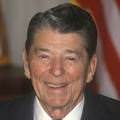
Ronald Reagan
On February 6, 1911, Ronald Wilson Reagan was born to Nelle and John Reagan in Tampico, Illinois. He attended high school in nearby Dixon then worked his way through Eureka College. There, he studied economics and sociology, played on the football team, and acted in school plays. Upon graduation, he became a radio sports announcer. A screen test in 1937 won him a contract in Hollywood. During the next two decades, he appeared in 53 films.
As President of the Screen Actors Guild, Reagan became embroiled in disputes over the issue of Communism in the film industry; his political views shifted from liberal to conservative. He toured the country as a television host, becoming a spokesman for conservatism. In 1966 he was elected Governor of California by a margin of a million votes. He was re-elected in 1970.
Ronald Reagan won the Republican Presidential nomination in 1980 and chose as his running mate former Texas Congressman and United Nations Ambassador George Bush. Voters troubled by inflation and by the year-long confinement of Americans in Iran swept the Republican ticket into office. Reagan won 489 electoral votes to 49 for President Jimmy Carter.
Ronald Reagan became the 40th President of the United States serving America from 1981 to 1989. His term saw a restoration of prosperity at home, with the goal of achieving “peace through strength” abroad.
At the end of his two terms in office, Ronald Reagan viewed with satisfaction the achievements of his innovative program known as the Reagan Revolution, which aimed to reinvigorate the American people and reduce their reliance upon Government. He felt he had fulfilled his campaign pledge of 1980 to restore “the great, confident roar of American progress and growth and optimism.”
On January 20, 1981, Reagan took office. Only 69 days later he was shot by a would-be assassin, but quickly recovered and returned to duty. His grace and wit during the dangerous incident caused his popularity to soar.
Dealing skillfully with Congress, Reagan obtained legislation to stimulate economic growth, curb inflation, increase employment, and strengthen national defense. He embarked upon a course of cutting taxes and Government expenditures, refusing to deviate from it when the strengthening of defense forces led to a large deficit.
A renewal of national self-confidence by 1984 helped Reagan and Bush win a second term with an unprecedented number of electoral votes. Their victory turned away Democratic challengers Walter F. Mondale and Geraldine Ferraro.
In 1986 Reagan obtained an overhaul of the income tax code, which eliminated many deductions and exempted millions of people with low incomes. At the end of his administration, the Nation was enjoying its longest recorded period of peacetime prosperity without recession or depression.
In foreign policy, Reagan sought to achieve “peace through strength.” During his two terms he increased defense spending 35 percent, but sought to improve relations with the Soviet Union. In dramatic meetings with Soviet leader Mikhail Gorbachev, he negotiated a treaty that would eliminate intermediate-range nuclear missiles. Reagan declared war against international terrorism, sending American bombers against Libya after evidence came out that Libya was involved in an attack on American soldiers in a West Berlin nightclub.
By ordering naval escorts in the Persian Gulf, he maintained the free flow of oil during the Iran-Iraq war. In keeping with the Reagan Doctrine, he gave support to anti-Communist insurgencies in Central America, Asia, and Africa.
Overall, the Reagan years saw a restoration of prosperity, and the goal of peace through strength seemed to be within grasp.
Study/Discussion Questions
1. How did George Washington's actions as Founding Father, Framer, and First President establish his legacy in American history?
2. How was Thomas Jefferson so instrumental in crafting America's foreign policy? Give two examples.
3. Do you agree with Andrew Jackson's Indian Removal Act? What do you think this act showed about his character?
4. Abraham Lincoln delivered the Emancipation Proclamation Speech in 1863. How was this a turning point in the Civil War?
5. Explain FDR's New Deal. Include three strengths.
6. How did Theodore Roosevelt improve the Monroe Doctrine?
7. What effect did Ronald Reagan's military spending have on America? Defend your position.
Sources:
The Reader’s Companion to American History. Eric Foner and John A. Garraty, Editors. Copyright © 1991 by Houghton Mifflin Harcourt Publishing Company. All rights reserved.
UVA. Miller Center. KahnAcademy.org
Franklin D. Roosevelt Biography. https://www.biography.com/people/franklin-d-roosevelt- 9463381. A&E Television Networks. August 24, 2017, Accessed June 21, 2018.
Abraham Lincoln Biography. https://www.biography.com/people/abraham-lincoln-9382540. A&E Television Networks. August 24, 2017, Accessed June 21, 2018. theodore Roosevelt https://www.whitehouse.gov/about-the-white-house/presidents/theodore- roosevelt/. “The Presidents of the United States of America,” by Frank Freidel and Hugh Sidey. Copyright 2006 by the White House Historical Association. (used with modification) Ronald Reagan. https://www.whitehouse.gov/about-the-white-house/presidents/ronald-reagan/ “The Presidents of the United States of America,” by Frank Freidel and Hugh Sidey. Copyright 2006 by the White House Historical Association. (used with modification)

